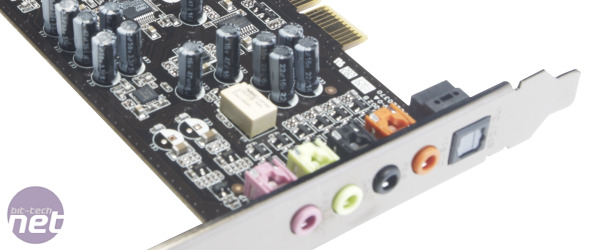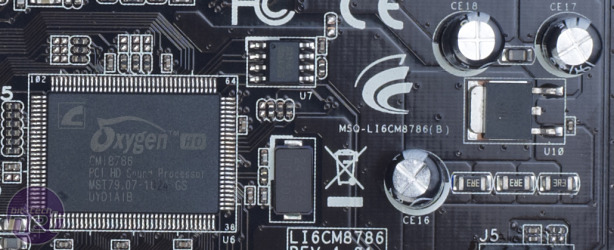Asus Xonar DG Review
Manufacturer: AsusUK Price (as reviewed): £25.99 (inc VAT)
US Price (as reviewed): $27.99 (ex tax)
The Xonar DG is a remarkably inexpensive half-height PCI sound card, but it isn’t cheap and nasty. With 5.1 analogue surround sound, the obligatory optical S/PDIF output and variable impedance settings so that you can optimise the card’s analogue stereo output for various types of headphones, it has a lot in its favour. Naturally, Asus has cut costs in a number of areas compared with the more expensive models in the Xonar range, and we were keen to see exactly what form the cost cutting takes.
The Xonar DG is built around a C-Media Oxygen HD CMI8786 audio processor. It’s a relation of the Oxygen HD CMI8788 processor that’s present on Asus’ more expensive sound cards (it’s rebadged as an Asus AV100 or AV200 on these).
The CMI8786 is a lower-spec processor; most conspicuously, it has a maximum sample rate of 96KHz/24-bit for playback and 48KHz/24-bit recording. More expensive Xonar cards have 192KHz/24-bit playback and 96kHz/24-bit recording, for example. The DG’s rated output signal-to-noise ratio (SNR) is 105dB.
A Cirrus Logic CS4245 digital-to-analogue converter (DAC) handles the output to the front/headphone jack, as well as acting as an analogue-to-digital converter (ADC) for the microphone/line input. The DAC for the side and rear surround channels is a Cirrus Logic CS4361. The Xonar DG’s driver provides features such as Dolby Headphone virtual surround sound, environmental audio for games (including emulated support for Creative’s depreciated EAX 5.0 standard) and vocal effects.
The driver’s main audio output settings also allow you to select the front stereo jack’s output impedance to match your headphones, whether you use a set of 150ohm cans or 32ohm earbuds. However, there’s no audio stream input/output (ASIO) driver, which can cause problems when using audio creation software.
We haven’t heard discernibly poor audio from a dedicated sound card in years, and the DG is no exception. We tested it with a range of music, movie and gaming tests, as well as making full use of the driver’s mixer and effect settings. While the card lacks the high-end op-amps and DACs that we’ve had the pleasure of hearing on many of Asus’ more expensive Xonar cards, the audio quality of the DG was good enough to ensure that our headphones and speakers made the audio far more enjoyable than it was with on-board audio.
Specifications
- Processor C-Media Oxygen HD CMI-8786
- Memory None
- Interface 32-bit PCI
- Maximum Channels 6
- Bit-rate 24-bit
- Maximum Sample Rate 96KHz
- Inputs 3.5mm mini-jack analogue mic/line in
- Outputs 3 x 3.5mm mini-jack analogue surround out, optical S/PDIF out
- Audio technologies Dolby Headphone, Dolby Virtual Speaker, DirectSound3D GX 2.5, EAX 2.0&1.0, DirectSound HW, DirectSound SW, A3D 1.0, OpenAL generic modes, 128 3D sounds processing capability (EAX5 software emulation), SoundFont, ASIO 2.0 driver support
- Extras half-height bracket, TOS-Link adaptor

MSI MPG Velox 100R Chassis Review
October 14 2021 | 15:04











Want to comment? Please log in.